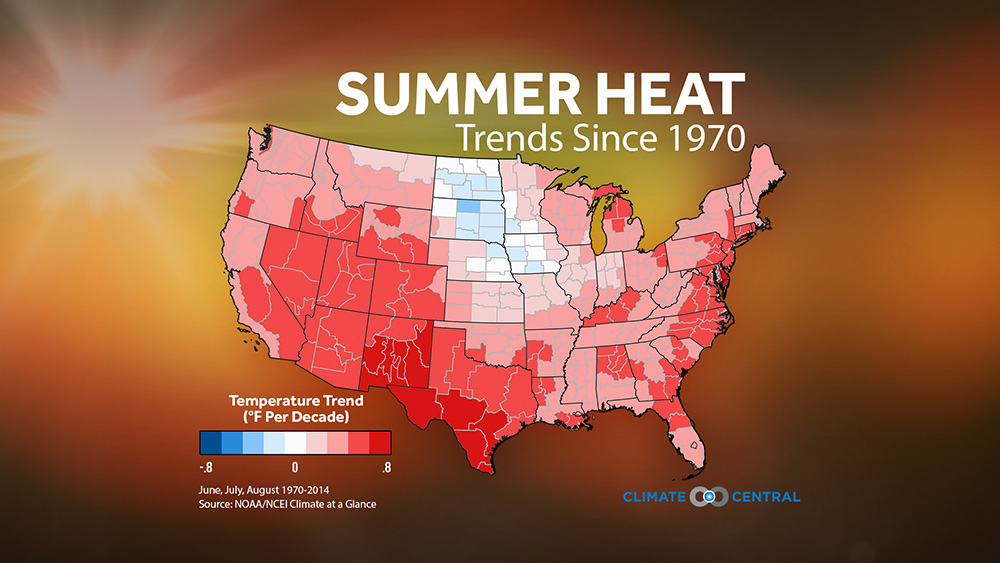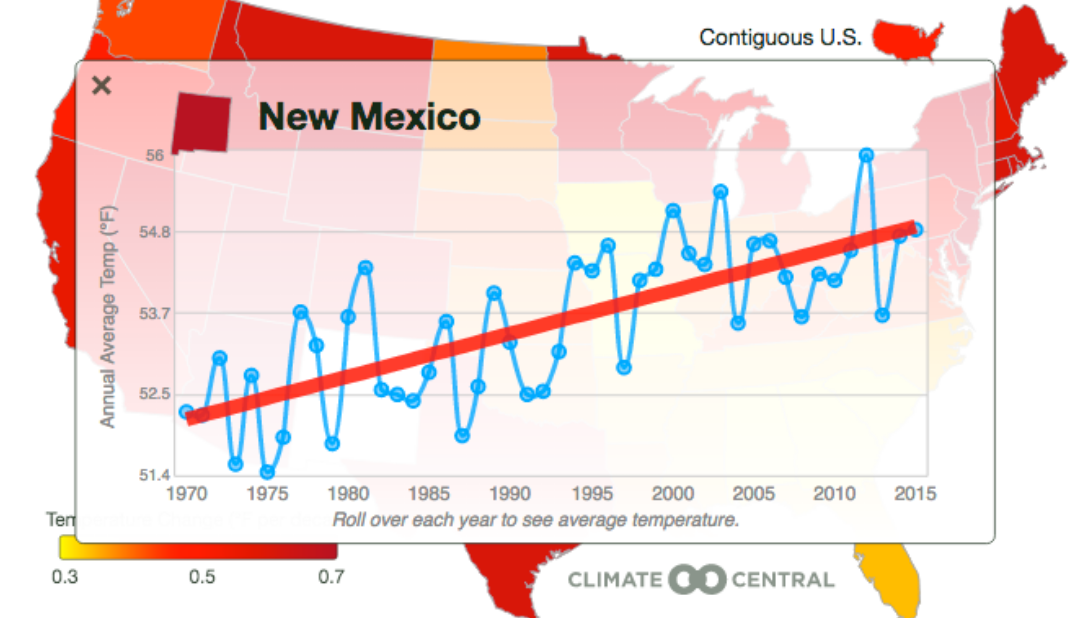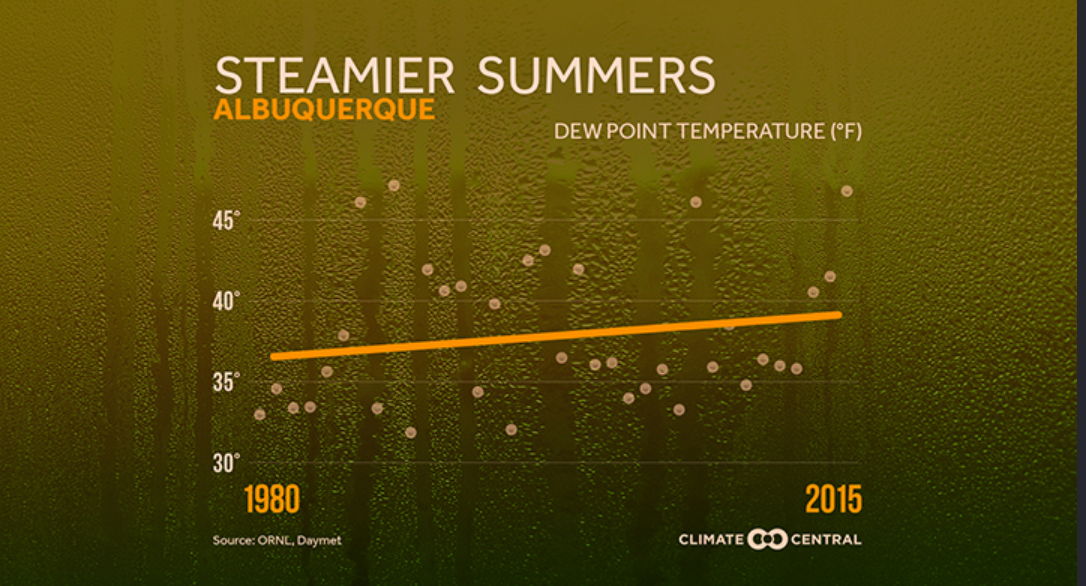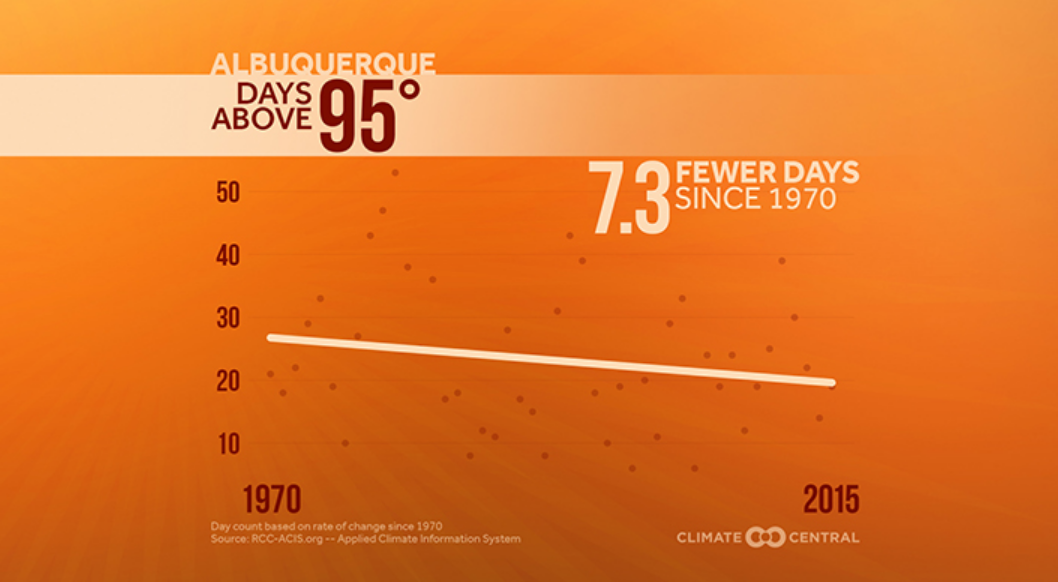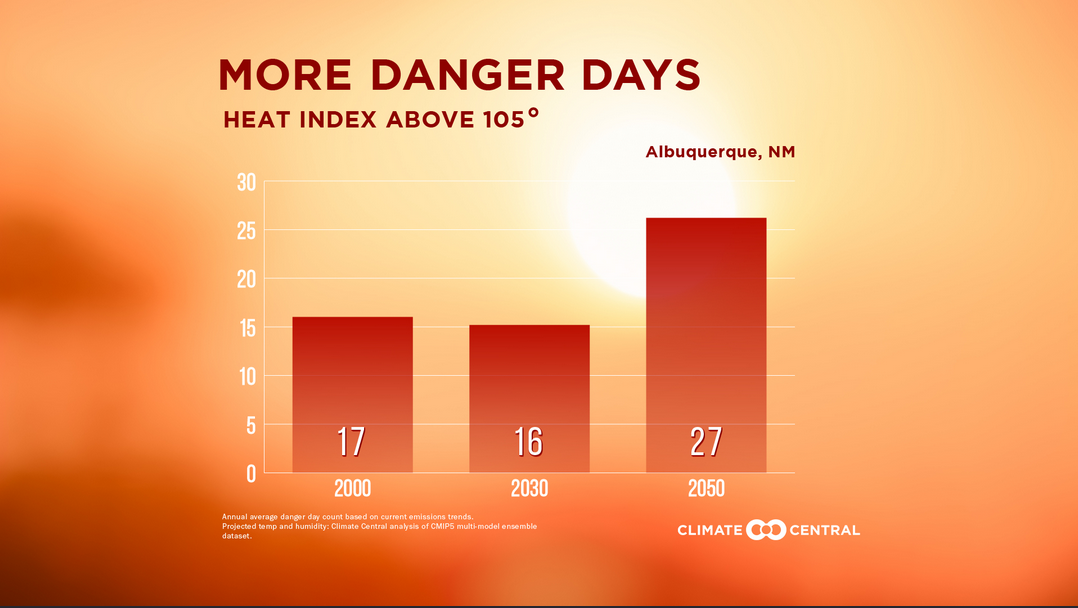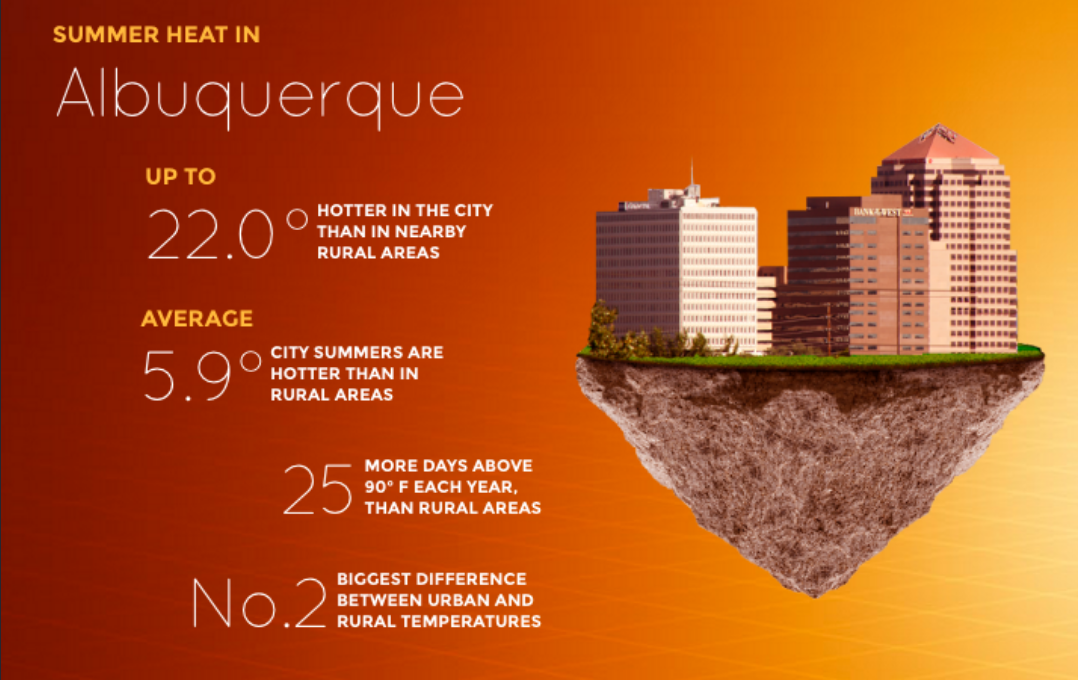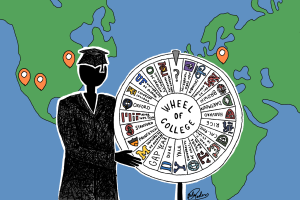Climate Crisis in New Mexico
Where are we now? Where are we heading?
September 18, 2020
Out of control fires, unprecedented hurricanes, and extended drought remind us that amidst the pandemic, the world’s climate is also in crisis. New Mexico is a prime example of climate change and its detrimental effects, like shrinking lakes, melting snowpacks, drought, and raging fires. These effects are present today and, without change, their threat to the planet and all of its residents will grow.
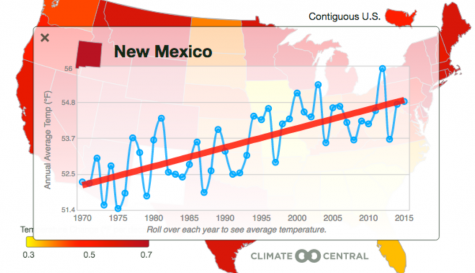
Currently, New Mexico is already seeing record trends at the hands of climate change: the Land of Enchantment is the sixth fastest warming state in the US. According to 350 New Mexico, over each decade since 1970, the annual average temperature has increased by 0.6 degrees Fahrenheit, the equivalent of 2.7 degrees Fahrenheit over just 45 years. These numbers may seem small, but over time, we will begin to see even more dramatic effects. Because of New Mexico’s rising heat, snowpacks are smaller and melt more quickly. Climate Central conducted an analysis of winter precipitation over 65 years from 2000 weather stations across 42 states. The analysis indicates that the Southwest region of the country has seen an overall reduction in winter precipitation. While New Mexico is unique as the only state in the region to see a slight increase in snowfall, the study still shows that overall, both regionally and nationally snowfall still will decrease. Additionally, even if New Mexico received more snow than rain in future winters, the heat would still prevent solid snowpacks from forming. When snowpacks are weak, rivers and streams lose their water, this is why New Mexico is currently going through a water shortage.

Elephant Butte Lake, New Mexico’s largest body of water, is a prime example of water loss. In 1994, Elephant Butte Lake was almost at full capacity, but in 2013 it was at its lowest, a mere three percent of capacity. Elephant Butte’s full capacity is roughly 2,065,010 acre⋅ft, which rounds out to 700 billion gallons. At three percent capacity, Elephant Butte has only 61950.3 acre⋅ft or about 20 billion gallons. Developments intended to border the lake are now miles away, and surrounded by mesquite desert. Water Data For Texas shows that as of September 2020, Elephant Butte Lake is at 4.4% capacity, which is still extremely low. Water Data For Texas demonstrates that the lake’s capacity fluctuates, but in general even when the capacity goes up, it is still far lower than historically. Low water levels in lakes not only make recreation more difficult and ruin intended waterfront communities, but also take a significant toll on local farmers who use the lake for irrigation and become forced to rely on groundwater and other difficult-to-reach water sources.
As the Las Cruces Sun and USGS show, the Rio Grande is also much lower, limiting biodiversity and recreation, and more crucially, affecting the amount of agricultural and drinking water available to surrounding communities throughout its watershed. New Mexico has elaborate irrigation systems that rely on river water, and without enough river water, those systems are being corrupted and forced to take up different, often more taxing means of irrigating. When rainfall is more sporadic and unpredictable, a quick surplus of heavy rain can lead to flooding, and the unpredictably timed storms create a discrepancy between when rain water is needed and when rain water actually occurs.
In addition to changes to water supply and snowpack, climate change also has dramatic impacts on landscapes. Areas in drought are prone to fire devastation, which we see in New Mexico and across the Western United States. In moderation, fire can benefit ecosystems by clearing dead plant life or breaking down nutrients found in soil. The problem is that the wildfires we are seeing now are by no means, a part of this natural cycle. Unruly fires destroy property, release pollutants into the air (bad for breathing and the atmosphere), and decimate ecosystems.
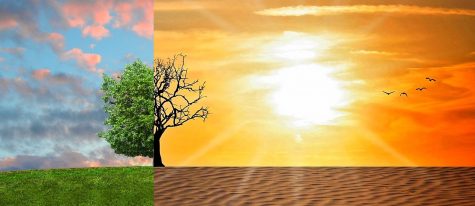 What does the future look like for New Mexico as climate change progresses? According to the Union of Concerned Scientists, we will see earlier springs, hotter summers, and more unpredictable winters. We will also see more intense droughts, and when we are fortunate enough to receive precipitation, it will be mostly rain, not the snow needed to make a snowpack. Additionally, New Mexico’s multi billion dollar agricultural industry will continue to struggle with less and lower quality water. Salt and mineral rich groundwater will have to be pumped from deep wells which can be bad for crops and poison the soil. As winters continue to get warmer, insects that normally die off will survive and wreak havoc on forests and agriculture. Due to drought, trees are less capable of defending themselves against attacks from insects such as bark beetles. Forests will continue to burn as New Mexico’s fire season grows and the land dries. The Union of Concerned Scientists also states the US Forest Service’s prediction that piñons may be vanquished from a majority of their current range as soon as 2030.
What does the future look like for New Mexico as climate change progresses? According to the Union of Concerned Scientists, we will see earlier springs, hotter summers, and more unpredictable winters. We will also see more intense droughts, and when we are fortunate enough to receive precipitation, it will be mostly rain, not the snow needed to make a snowpack. Additionally, New Mexico’s multi billion dollar agricultural industry will continue to struggle with less and lower quality water. Salt and mineral rich groundwater will have to be pumped from deep wells which can be bad for crops and poison the soil. As winters continue to get warmer, insects that normally die off will survive and wreak havoc on forests and agriculture. Due to drought, trees are less capable of defending themselves against attacks from insects such as bark beetles. Forests will continue to burn as New Mexico’s fire season grows and the land dries. The Union of Concerned Scientists also states the US Forest Service’s prediction that piñons may be vanquished from a majority of their current range as soon as 2030.
The Environmental Protection Agency highlighted some of the struggles facing tribal communities in New Mexico, including shrinking availability and populations of fish, game, and plant life, as well as water loss. Sickness is likely to accompany extreme heat, poor air quality, and drought, and may hit tribes especially hard on reservations in a similar fashion as the COVID-19 pandemic. Extreme heat and cold can create problems for those without electricity, such as 40% of the Navajo reservation.
Scientists agree broadly on the threats posed by climate change. Many people may feel helpless in the face of its massive implications. However, there are things everyday New Mexicans can do. The Natural Resources Defense Council suggests many ways to slow the crisis down. Some solutions require some serious investments but others are simple. First and foremost, getting educated on the climate and how it is changing is essential. Discussing climate change in person or through social media brings attention to the issue. Being conscious of not wasting food, and composting your leftovers reduces demand and gives waste back to the Earth. Cattle and livestock are often terrible for the environment. Overgrazing ruins ecosystems and forces areas and habitats to be replaced with grazable land. Additionally cow gas and burps (not a joke), release tons of methane which, according to CFAES, is 23 times more toxic than carbon dioxide. Reducing consumption of beef and dairy will limit deforestation, overgrazing, and cowborn methane. Of course, being vegan is a good option to limit the demand for beef, dairy, and animal products, but if that doesn’t fit your lifestyle, consuming responsibly grown animal products and reducing consumption is also efficient. Easy tasks around the house like not wasting water, turning off lights, and unplugging unused electronics can also help conserve water and electricity. Some ways to slow the crisis require some money; consider buying a hybrid or electric vehicle, converting your house or business to renewable energy, and buying appliances labeled with Energy Star. Although difficult, consider transportation: bike to destinations, utilize public transportation, and limit driving and flying. But in order to see large reductions in climate risk, nations across the global community must make efforts, and hold corporations accountable. Consider protests, strikes, and demanding climate justice!


